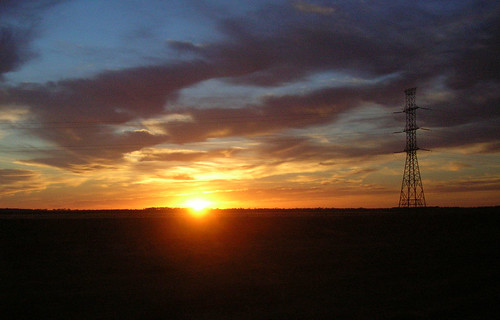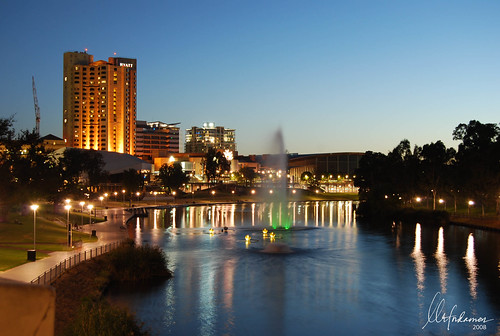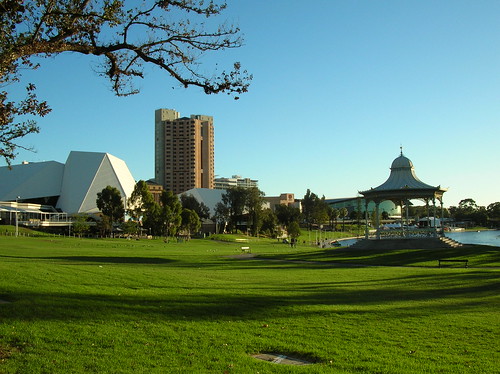To tread on Earth lightly...
This past week Australia is abuzz with "Think climate, Think change" with the government's release of the green paper, Carbon Pollution Reduction Scheme following the release early this month of the draft report of the Garnaut Climate Change Review, a commissioned review to examine the impacts, challenges and opportunities for climate change in Australia.
The public responds to tangible environmental problems (Matthew Warren, 2008). Unlike other environmental problems such as those associated with the use of plastic bags which have been given much focus because of its visibility, climate change has been harder to sell and be accepted by the wider public because anthropogenic emissions, by its nature, are invisible. However, as Warren (2008) indicated, putting a price on greenhouse emissions will certainly get the public's attention.
Albeit missing that crucial bottom line of the cost implication on cutting the country's greenhouse gas emissions through the implementation of the emissions trading scheme, surprisingly, even with the limited and/or lack of understanding of how ETS works, latest national poll indicate a 67% support for carbon pollution reduction.
With certainty, the biggest impact of the ETS on households will be rises in the cost of energy and fuel from 2010. Estimates predicted electricity costs would rise by 16 per cent and gas by 9 per cent. "The Government wants those price rises felt so we are encouraged to phase out use of carbon-producing goods and services." Under the scheme, Australian motorists are given five years notice from hereon of the impending price impact of carbon pollution reduction scheme on petrol and that motorists should prepare for this by shifting to smaller cars and driving less.
With humans as comfort-seeking creatures, almost all of our daily activities would create carbon dioxide and other greenhouse gases. So, unless we live in caves and never gather around fire for warmth, we have a carbon footprint. Australia has the second highest carbon footprint after the U.S., a reflection of the ubiquitous energy-hungry lifestyles.

By comparison, the U.S. average is 21 tonnes, New Zealand is 13 tonnes,
and Japan is 10 tonnes. The average Australian household of 2.5 people has a 14.6-tonne carbon footprint which equates to an average Australian contributing approximately 6 tonnes of CO2 into the atmosphere per year.
Using C02 emission calculators available online: Carbonify.com and Carbon neutral, I have worked out my impact on the environment. To my disappointment, in the last three years, I averaged 47% more than the national average at 8.16 to 8.82 tonnes of CO2 per year!
Household waste: 1.22 tonnes (13%) = 8 trees
Food emissions: 2.6 tonnes (29%) = 16 trees
Vehicle travel: 0
Air travel: 4.08 tonnes (46%) = 25 trees
Energy use: 0.92 tonnes (12%) = 6 trees
Following the rule of thumb that on average, 6 trees are needed to offset
1 tonne, I would need 40-53 trees to offset my impacts on the environment!
How to tread lightly on Earth? Being aware that offsetting should be seen as a last resort, am I willing to cut down on activities to reduce my emissions contribution?
The public responds to tangible environmental problems (Matthew Warren, 2008). Unlike other environmental problems such as those associated with the use of plastic bags which have been given much focus because of its visibility, climate change has been harder to sell and be accepted by the wider public because anthropogenic emissions, by its nature, are invisible. However, as Warren (2008) indicated, putting a price on greenhouse emissions will certainly get the public's attention.
Albeit missing that crucial bottom line of the cost implication on cutting the country's greenhouse gas emissions through the implementation of the emissions trading scheme, surprisingly, even with the limited and/or lack of understanding of how ETS works, latest national poll indicate a 67% support for carbon pollution reduction.
With certainty, the biggest impact of the ETS on households will be rises in the cost of energy and fuel from 2010. Estimates predicted electricity costs would rise by 16 per cent and gas by 9 per cent. "The Government wants those price rises felt so we are encouraged to phase out use of carbon-producing goods and services." Under the scheme, Australian motorists are given five years notice from hereon of the impending price impact of carbon pollution reduction scheme on petrol and that motorists should prepare for this by shifting to smaller cars and driving less.
With humans as comfort-seeking creatures, almost all of our daily activities would create carbon dioxide and other greenhouse gases. So, unless we live in caves and never gather around fire for warmth, we have a carbon footprint. Australia has the second highest carbon footprint after the U.S., a reflection of the ubiquitous energy-hungry lifestyles.

By comparison, the U.S. average is 21 tonnes, New Zealand is 13 tonnes,
and Japan is 10 tonnes. The average Australian household of 2.5 people has a 14.6-tonne carbon footprint which equates to an average Australian contributing approximately 6 tonnes of CO2 into the atmosphere per year.
Using C02 emission calculators available online: Carbonify.com and Carbon neutral, I have worked out my impact on the environment. To my disappointment, in the last three years, I averaged 47% more than the national average at 8.16 to 8.82 tonnes of CO2 per year!
Household waste: 1.22 tonnes (13%) = 8 trees
Food emissions: 2.6 tonnes (29%) = 16 trees
Vehicle travel: 0
Air travel: 4.08 tonnes (46%) = 25 trees
Energy use: 0.92 tonnes (12%) = 6 trees
Following the rule of thumb that on average, 6 trees are needed to offset
1 tonne, I would need 40-53 trees to offset my impacts on the environment!
How to tread lightly on Earth? Being aware that offsetting should be seen as a last resort, am I willing to cut down on activities to reduce my emissions contribution?
Labels: Australia, Digressions, Ramblings, Sustainability




